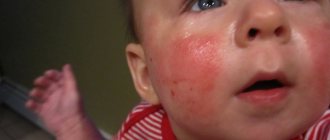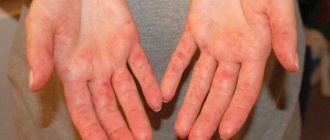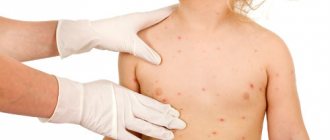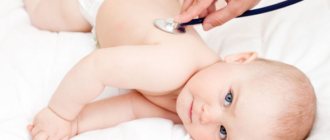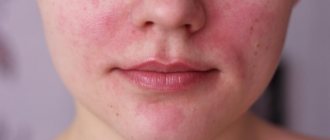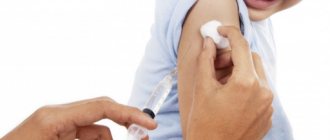Hand dermatitis - inflammation of the skin begins to develop under the influence of certain factors. Some of them are unconditional (they provoke an allergic reaction in every person), while others are conditional (they can provoke an allergic reaction only in a person with great sensitivity).
Unconditional factors are acid, alkali, temperature, chemical reagent. After the first contact with them, dermatitis immediately develops. The type of skin a person has also has a great influence: thin, sensitive or rougher. Those people who have thin hand skin often experience symptoms of irritation, especially for housewives who use strong detergents and cleaning products.
To cure dermatitis, it is worth using certain regimens. Since very often such diseases develop due to the fact that a person suffers from some kind of internal organ disease, the treatment process begins with a comprehensive examination.
When a foreign body enters the human body, antibodies begin to be synthesized in the blood, which are designed to fight it. This process has the following name - sensitization. The skin of the hands begins to become covered with various rashes, thereby exhibiting a protective reaction. A person develops dermatitis.
There are two types of allergic dermatitis:
- Acute, which is expressed in the form of swelling and redness of the skin of the hands, watery rashes filled with transparent or bloody contents. When the bubble bursts, the patient experiences severe discomfort. When the inflammation subsides, the skin becomes covered with crusts and scales.
- Chronic, accompanied by lichenification of the skin (its thickening), peeling, cracking, severe keratinization, and sometimes death of the skin.
The skin performs a protective function against various exogenous influences. Very young children and adults have encountered the problem of palm allergies at least once in their lives. It may look like a small rash, peeling of the skin, purulent formations, and red spots.
There are a lot of diseases that are associated with damage to the skin of the hands, but we will focus on allergies on the palms and the causes that provoke them.
Factors that influence the development of allergies can be divided into two groups:
Endogenous causes:
- physical influence;
- chemical influence;
- insect bites;
- failure to comply with hygiene rules.
Exogenous causes:
- unbalanced diet;
- metabolic disorder;
- the presence of acute or chronic diseases;
- genetic predisposition;
- taking medications.
Let's take a closer look at exactly what factors can cause an allergic reaction:
- One-time or regular contact with household chemicals. Those toxic substances that have a strong effect cause great harm to the skin of the hands. A rash and severe itching appear on the affected areas, cracks and wounds form on the fingers, so it is very painful to bend and unbend them.
- Poor quality food products often provoke the occurrence of allergic dermatitis, particularly in young children. After all, their immune system has not yet been formed. Most often, the allergic reaction takes the form of hives. It occurs most often after a person has eaten fruits, brightly colored berries, chocolate, mushrooms, or drunk cow's milk.
- An allergic reaction on the palms can also occur due to the fact that a person has been in the cold for a long time. He will experience symptoms very similar to frostbite: red skin, severe sensitivity, pain, dryness. A similar reaction occurs on both the palms and soles.
- Allergies on the palms of a child are most often caused by ingestion of foods and contact with substances of an allergenic nature.
What kind of rash is there?
Rashes on the palms and soles of a child can be different:
- sometimes the palms become covered with bubbles filled with a clear liquid inside;
- if the blisters are filled with pus, such a rash is called pustules;
- if nodular elements begin to appear inside the skin, they are called papules;
- small rashes flush with the skin are called spots;
- if the rash has a dense, rough structure and rises above the skin, the patient is diagnosed with blisters;
- if the skin is deeply damaged and discharge comes from the site of the lesion, erosion or skin ulcer is diagnosed.
In order to properly treat rashes on the palms and feet, it is recommended that the child be shown to a doctor. The specialist will determine the type of rash and prescribe appropriate therapy.
Symptoms
Allergies on the palms occur through the same mechanism as other allergic skin reactions:
- redness;
- strong ;
- of different nature;
- swelling of tissues.
The palms become very itchy due to severe itching. This leads to bloody scratches. The itching does not go away after applying moisturizer or washing your hands. The rash may take the form of small blisters with transparent exudate inside, which tend to merge with each other.
If the allergy is chronic, the rashes may merge completely, and the epidermis does not have time to peel off. Crusts form and a transverse crack appears in the palm. Chemical allergens can cause blisters on the palms that resemble a burn. If the reaction is caused by direct contact of the irritant with the palms, then the localization of symptoms may be limited only to the site of exposure, without generalized reactions.
What should you pay attention to?
If a child has a rash on the palms and feet, it is important to closely monitor his well-being, since in addition to the rash, the patient may experience the following symptoms:
- increased body temperature;
- clear nasal discharge;
- the appearance of cough, retching, vomiting;
- lack of appetite;
- pain in the stomach or throat;
- sluggish state.
The rash can affect the child's entire body. If you have symptoms, you should immediately consult a doctor. If they are absent, remember what food the child ate, what he played with and how, since the rash on the skin may be due to a common allergy.
Rash on the palms
A rash on the palms of a child can appear due to various reasons. It comes in different forms, so only a doctor should make a diagnosis and prescribe treatment.

Infectious rashes
If there is a small rash on the palms or other parts of the body, the development of an infectious disease can be suspected. In this case, pimples are accompanied by fever, chills, pain in the throat or stomach, loss of appetite, and cough.
The following symptoms may indicate that the child is infected:
- rubella;
- measles;
- chickenpox;
- scarlet fever;
- meningococcus.
The most dangerous is meningococcal disease, since its rashes bleed and are accompanied by fever. If left untreated, death may occur. Therefore, it is important to immediately seek medical help at the first symptoms in order to protect the life and health of the patient.
Allergic rashes
Since children actively explore the world, they often develop allergies. Local allergies most often make themselves felt due to contact with various substances: house dust, field plants or other allergens.
If a child is allergic to something, his skin may not only become covered in rashes, but his body temperature may rise, itching, and cough may occur.
Often an allergy in the form of a skin rash indicates that the child ate something that caused such a reaction in the body. In this case, reconsider your child's diet.
Rashes due to parasites
The palms or other parts of the body often become covered in a rash due to parasite or insect bites. The most common disease is scabies, which occurs due to scabies mite bites. In this case, the patient complains of severe itching, worsening at night. Since scabies is considered a contagious disease, you should definitely consult a doctor, and isolate the patient from communication with other children until he or she has completely recovered.
Sometimes the body becomes covered with scales due to the presence of worms or other similar parasites in the body. In this case, you need to take special tablets.
Other causes of baby skin rash
Rashes can occur due to inflammation of blood vessels and small capillaries. The doctor diagnoses a hemorrhagic rash. Diseases of the cardiovascular system and internal organs can also manifest themselves in the form of pinpoint subcutaneous hemorrhages. Hemorrhagic rash can only be treated in a hospital under the strict supervision of a doctor.
Sometimes prickly heat or other unpleasant symptoms on a child’s body occur due to non-compliance with personal hygiene rules.
Causes of hand allergies
There are many reasons for hand skin allergies:
- insect bites;
- contact with household chemicals and low-quality cosmetics;
- dry skin;
- hypothermia;
- drying of the surface of the hands under the influence of ultraviolet rays;
- allergy to animal fur;
- reaction to food;
- reaction to medications;
- with a weakened immune system, an allergic rash also appears on the hands with low-quality food products;
- contact with iron objects.
If for these reasons there are factors such as stress, psycho-emotional stress, decreased immunity, disruptions in the hormonal system, hereditary factors, etc., then the allergic reaction on the hands is more pronounced.
Rash on legs
If a rash appears on your child’s feet, you should not self-medicate. Show it to the doctor, as treatment must be prescribed correctly and individually. To make a diagnosis, the doctor may ask the parents if the temperature has increased, what kind of stool the child has, if there are headaches or muscle pains, how the baby is behaving, or if he is complaining of a rash.
The foot may become covered in a rash due to diaper dermatitis, prickly heat, measles, chickenpox, urticaria, psoriasis, and insect bites.
Sometimes parents begin to smear the rash with brilliant green or other ointments. This should not be done until the child has been examined by a doctor.
What to do about the rash?
The doctor prescribes the treatment. At the same time, he takes into account the cause of the rash. If a leg, palm or other part of the body is affected by rashes, treatment is carried out as follows:
- for a viral disease, specific treatment is not performed;
- for infectious rashes caused by bacteria, antibiotics are used;
- in case of allergies, it is important to eliminate the allergen and carry out a course of treatment with antihistamines;
- in case of vascular diseases, diagnosis and prescription are carried out by a hematologist;
- If you have scabies, consult a dermatologist and follow his recommendations.
Creams and ointments are used to relieve severe itching. Sometimes the doctor may recommend special medicinal baths.
The main causes of itching in the palms
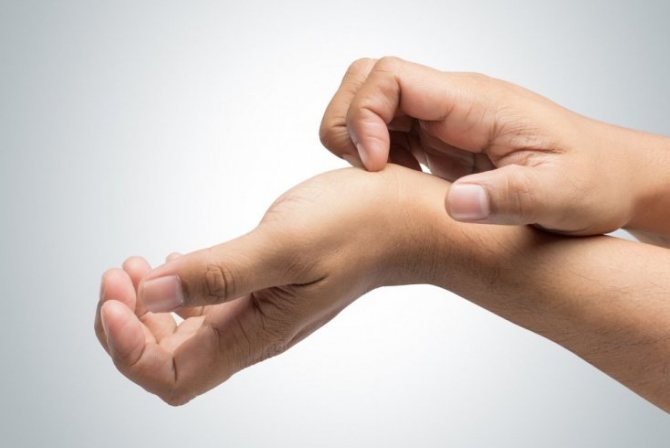
An obsessive and annoying itch does not add a good mood to anyone and always brings a lot of inconvenience. Itching of the hands and arms is especially annoying, as it can interfere with everyday life and activities.
There are a huge number of reasons for its appearance, some of them are quite harmless and easily explained, in other cases this condition indicates serious illnesses that require timely and complex treatment.
Rash prevention
For treatment to be successful, feed your child foods that are compatible with a strict diet. It is especially important to follow this rule if the rash is caused by a food allergy. Eliminate chocolates, eggs, fish, seafood, tomatoes, honey for a while. During the treatment of rashes, spicy, smoked and spicy foods are contraindicated.
Include fermented milk products, vegetable soup, cereal dishes, vegetables, boiled potatoes and vegetable oil in your child’s menu.
Try to walk a lot of time in the fresh air with your child. Protect him from stressful situations. Keep your hands and feet clean. Let us drink only purified water.
Now you know how and when a rash appears on the feet and palms of a child. It is important not to self-medicate, as rashes can have different origins. Therefore, treatment should only be prescribed by a specialist on an individual basis.
ladysmed.ru
Allergy on the hands is manifested by damage to the skin and subcutaneous tissue - redness, rash, blisters, wounds, itching, swelling of the affected areas. Depending on the allergen, with a pathological reaction of the immune system, not only skin, but also respiratory and gastrointestinal symptoms can be observed. Skin signs appear first; lesions on the hands may indicate a problem:
- if an allergic rash appears on the fingers, and it is accompanied by severe itching, then, most likely, the child came into contact with household chemicals, the components of which the body perceived as hostile;
- rashes on the elbow joints indicate a food allergy;
- pinpoint rashes usually indicate hypersensitivity to insect bites;
- If the skin of the hands begins to look painful, redness and peeling appear on it, then there is a high probability that the child suffers from a cold allergy.
Signs of allergies that appear on the hands can vary in intensity. Typically, upon first contact with an allergen, symptoms are less severe, but begin to worsen if contact continues.
Diagnosis of hand allergies
When diagnosing an allergy, the doctor examines the child and also conducts a survey to clarify the clinical picture. Based on the symptoms, the doctor can only assume an allergic reaction, since similar skin signs appear in other diseases. Also, allergic skin manifestations on the hands are similar to the clinical picture of a bacterial or fungal infection. An accurate diagnosis is made only when the allergen is identified. To do this:
- tests for specific immunoglobulins;
- allergy tests.
Allergy tests are considered the most informative diagnostic method. However, prick tests are carried out only after the child is three to five years old. Allergy tests are not recommended for children because they can harm a fragile immune system.
detstrana.ru
Redness of the skin on the hands
The reaction may look like hives, red patches of skin, and other rashes. The consequence of such an allergy will be itching.
The reasons for the problem are:
- from eating food;
- irritation from contact with household chemicals;
- prickly heat in adults;
- skin problems influenced by weather conditions;
- as a consequence of a stressful situation.
The photo describing the rash on the hands, presented on the site, demonstrates how different allergies can be.
The causes of rashes are different, therefore the type of allergic reaction itself is different:
- bubble - a cavity that is filled with liquid. 1 cm in size. Ulcers may appear after it;
- abscess - types of cavities are united by the presence of pus inside;
- papules (nodes) – the size reaches up to 3 cm. They change the consistency of the skin and its color;
- A blister is a small pink formation on the skin. Disappears on its own;
- spots - the color of the skin changes. There is no thickening or swelling of the skin in the areas under the spots.
Why does the rash appear?
Every parent is afraid of the symptoms associated with a rash, because often identifying and eliminating the cause of the manifestation is not easy and only a specialist can do it. Pediatricians advise studying the main factors that may cause rashes on the baby’s skin. This will help you follow preventive measures and, in case of unfavorable symptoms, understand what could be the impetus for the development of an allergic reaction or other pathology.
- The most common causes are allergic reactions to food. This is especially true for children under 3 years of age. Upon discharge from the maternity hospital, specialists must provide all young mothers with a list of products that can cause a rash in the baby. A child has a lot of dietary restrictions until the first year of life, so parents should carefully select a diet when complementary foods are introduced.
- A serious cause may be a pathology associated with an allergic reaction, infectious skin lesions, or a parasitic infection. Such diseases should be taken seriously, since an advanced disease can have a detrimental effect on the health of the child. Only a pediatrician can and should make a diagnosis and prescribe effective treatment.
- Rashes on the baby’s skin can be associated with ordinary lack of personal hygiene, or with improper care of the child’s body. A rash can appear as a result of a selected hygiene product, for example, soap, shampoo or cream, which causes an allergy and all the ensuing symptoms. Rashes can be activated when the powder is incorrectly selected or of poor quality. Failure to comply with personal hygiene rules easily leads to diseases, the characteristic manifestation of which is a rash. Every time after visiting a public place, you must thoroughly wash your child’s hands with soap.
- Oddly enough, the cause of rashes can be mosquito bites. These insects often bring a lot of discomfort to babies and their parents. Therefore, in the summer, when visiting the street, it is imperative to use children’s repellents to reduce the likelihood of bites and subsequent rashes.
The above factors relate to the general manifestations of a rash in a child, but what to do if the location of the rash is specific - on the palms and soles? Symptoms may indicate serious skin lesions or infectious pathologies. In order to take timely measures to eliminate the disease, it is worth carefully studying the main diseases and the causes that lead to this phenomenon.
Preventive measures
To prevent the appearance of a red rash, you can use the following rules:
- Always adhere to the rules of hygiene, wash your hands before eating and after visiting public places with warm water and soap;
- In the cold season, wear gloves or mittens, and in the warm season do not expose them to direct sunlight for a long time;
- Use rubber gloves while cleaning to minimize exposure to strong chemicals;
- Normalize your diet by removing any allergens from it;
- Do not touch unfamiliar animals on the street;
- Each family member must have their own hygiene items in the house; they cannot use others’ ones;
- Use hand moisturizer.
Dyshidrosis
When a child develops a rash on the feet and palms, which manifests itself in the form of specific blisters filled with fluid, this may be a signal that dyshidrosis has developed. This is an infectious disease that affects the skin of the feet and hands.
Pediatricians advise monitoring the child’s condition especially closely in the spring and summer. In the hot season, relapses of the disease occur much more often and are associated with blockage of the sebaceous glands. Excessive sweating can cause dyshidrosis in a baby.
Experts identify several factors influencing the development of pathology:
- excessive sweating;
- frequent exciting situations, stress;
- fungal diseases of the dermis;
- heredity;
- diseases of the endocrine system;
- gastrointestinal pathologies;
- allergy.
According to medical statistics, a child susceptible to atopic dermatitis and diathesis is more likely to suffer dyshidrosis.
Dr. Komarovsky believes that the cause of the development of the disease is an allergic reaction of the digestive system, so it is necessary to introduce a new product into the children's diet with caution. If the child is bottle-fed, it is worth replacing the milk formula with another one with a lower concentration.
It is necessary to know the main symptoms of the pathology in order to recognize the disease in time and take measures to eliminate it.
- Dyshidrosis manifests itself in the form of a rash; it most often affects the palms, inner surfaces of the fingers on the upper and lower extremities, and feet.
- At the initial stage, the child notices an uncomfortable tingling sensation in the area of the palms and feet. This leads to the baby starting to scratch the affected skin, resulting in a rash. It begins to cause itching and burning.
- Redness and specific balls and blisters appear on the dermis, which itch and fill with fluid.
- The bubbles are small in size and reach only a few millimeters. They have a transparent tint, but the skin around them becomes red due to constant scratching.
- Over the course of a week, a maximum of 10 days, the rash on the palms and feet goes away. They may open on their own or dry out. In this case, the healing process is accompanied by unpleasant sensations: swelling occurs, erosions appear in place of former blisters, and the dermis becomes painful.
- Finally, the skin begins to peel off. When using special means, the disease is eliminated from this moment in a few days.
Parents should remember that true dyshidrosis is distinguished by the absence of new blisters. After self-opening of the rash, no new manifestations should appear. The baby may develop dry dyshidrosis, which is characterized by the absence of the stage of bubbles with liquid, and the peeling stage immediately begins.
Treatment of pathology is not difficult if you consult a specialist in time.
Pediatricians often prescribe a specific therapeutic regimen consisting of antihistamine medications: Suprastin, Fenistil, Diazolin. Sorbent drugs (Activated carbon, Smecta, Enterosgel, Enterosorb) and sedatives that can be used in childhood are included: for example, Valerian. Sometimes the doctor prescribes additional medications or vitamin complexes for calcium levels.
For external use, antimicrobial drugs with a drying effect are prescribed: Brilliant Green solution, Fukortsin. Also, products that can quickly dry out rashes include: Sudocrem, Furacilin solution, zinc ointment. A prerequisite is the use of corticosteroid medications: Dermovate, Sinaflan, Lorinden, Flucinar. It is not recommended to use these drugs directly; a small amount of ointment should be added to baby cream and applied in moderation to the skin.
Coxsackie virus
This viral disease can occur in children aged 1 to 7 years. The virus is contagious, so a child can become infected in any public place. Pathology manifests itself in the form of high body temperature up to 39 degrees, and at this stage there may be no rashes. After about 3 days, a characteristic rash appears on the child’s body.
The Coxsackie virus is easy to recognize; its distinctive feature is the appearance of rashes not only on the palms and soles, but also around the mouth and in the oral cavity. They look like pale red spots of small diameter, not exceeding 2 mm.
Characteristic signs of the disease include constant itching in the affected area; children refuse to eat due to a painful sensation in the mouth. The cause of the disease can be a simple infection; the virus is transmitted not only through tactile contact, but also through airborne droplets. Therefore, if a pathology is detected in one family member, other children should be protected from the patient during treatment.
Therapy for the Coxsackie virus is long-term, the average course is 2 weeks and depends on the degree of damage and the stage of the disease. To relieve pain and eliminate rashes on the palms, feet and mouth, the child is prescribed antipyretic drugs and antihistamines. Pediatricians recommend giving your child plenty of fluids so that the virus leaves the body faster.
Differential diagnosis
Symptoms characteristic of palm allergies can also appear with other pathologies. Allergies can be confused with the following diseases:
- psoriasis;
- scabies;
- fungal infections;
- bacterial infections;
- rheumatoid arthritis.
The difference between allergies and other pathologies:
- Contact with the allergen is necessary.
- When pressing on the palms, allergic spots disappear.
- The inflammatory process does not spread beyond the site of exposure upon direct contact with the allergen.
- With scabies, the itching is not localized, there is no swelling or rash. Upon examination, you can find passages under the skin that were left by scabies mites.
- With rheumatoid arthritis, swelling and hyperemia appear, but there is no rash or itching on the palms. A hallmark of rheumatoid arthritis is stiffness in the hands in the morning.
To make an accurate diagnosis, you need to consult an allergist or dermatologist. Based on a thorough history and laboratory tests, the doctor will determine the causes of the pathology and prescribe adequate therapy.
Allergy
The rash appears as a result of an allergic reaction. This is the most common reason doctors claim. Skin rashes can occur as a result of many factors. Up to 3 years of age, food and medications can contribute to the appearance of a rash in a child. In the first case, an allergy appears after consuming a new ingredient in the diet, which is accompanied by a small rash throughout the body or in a specific area. Medicines, especially antibiotic drugs, cause a strong reaction in the body, during which a specific rash appears, the temperature may rise, and in rare cases complications appear.
Among allergens in childhood, pediatricians note domestic animals, especially cats. They can cause a severe reaction and lead to a rash all over the body, or the child suffers from itching in the nasal passage, accompanied by watery eyes.
Localization of the rash on the palms and soles indicates an allergic reaction to personal hygiene products. Most often, kids wash their hands and feet after a walk, so it’s not strange if a rash appears in these areas. This allergy has several features:
- small red spots appear on the feet and heels, which create severe itching, which causes the child to itch;
- over time (about 2-3 days) the spots become a little wider, their diameter does not exceed 3 mm;
- new rashes may appear as a result of the baby constantly scratching the surface of the skin;
- no fever or other symptoms appear.
By the location of the red spots, you can understand what caused the disease. If the rashes spread throughout the body, then most likely we are talking about low-quality powder for washing children's clothes. If a rash appears on the palms and feet, the reason lies in the wrong soap or washing gel. Sometimes the skin of the face suffers in such cases.
You should never use the same soap for all family members if there is a small child in the house.
The baby should have individual personal hygiene products. It is better that it is proven baby soap. This will help prevent allergic reactions on the skin.
If the pathology is associated with an allergy to a chemical, you must first eliminate the problem, that is, get rid of the allergenic substance or product. Afterwards, take antihistamines and apply creams or ointments that help eliminate the rash. This type of rash on the palms and feet is easy to treat, but only with the approval and consultation of a specialist.
Folk remedies
There are several effective and harmless recipes:
1. Decoction of birch buds.
The product helps even with such serious skin problems as eczema. Therefore, it copes with allergic manifestations without difficulty. 10 grams of raw materials are poured with 1 glass of boiling water and boiled for 20 minutes. Afterwards, wipe the damaged areas with a cooled solution.
How do you diagnose urticaria and angioedema?
Causes may be similar to acute hernias, but may also include autoimmunity, chronic infections, and hormonal imbalances.
Physical ictus: orthicaria caused by direct physical stimulation of the skin, such as cold, hot, sunburn exposure, vibration, pressure, sweating and exercise. Typically the exercise occurs where the skin is stimulated and rarely appears elsewhere. This is painful tissue swelling. It is passed down through her family. Most of the bubbles appear within an hour after exposure. . Your doctor will need to ask a lot of questions when trying to find a possible cause of hives or angioedema. 2. Grape leaves.
Soothe inflamed skin, relieve itching and redness. Dry leaves (1 tablespoon) are poured with boiling water and boiled for 10 minutes. You can wipe the skin or take baths with the decoction.
Allergies on the palms are cured quite quickly. You just need to follow all the specialist’s recommendations. Contact your doctor in a timely manner, and do not forget about preventive measures.
Since there are no specific tests or tumor-related angioedema, the test will depend on your clinical history and in-depth examination by your primary care physician, allergist, immunologist, or dermatologist. Skin tests may be performed to determine what allergies you have. Blood tests are done to determine if systemic disease exists.
What is the treatment for urticaria and angioedema?
The best treatment for hives and angioedema is to identify and treat the cause of the irritation, but this is not an easy task. Antihistamines are usually prescribed by a doctor or dermatologist to relieve symptoms. These medications can be taken at regular intervals to help prevent hives and associated swelling. Chronic hives can be treated with antihistamines or a combination of medications. When antihistamines do not help, oral corticosteroids may be prescribed.
The site is a medical portal for online consultations of pediatric and adult doctors of all specialties. You can on the topic “palm allergies”
and get a free online doctor’s consultation.
Ask your question
Other causes of rashes
The cause of rashes is often infectious diseases. Among the most dangerous and common are measles, rubella, chickenpox, and scabies. With these pathologies, a rash may appear not only on the palms and soles, but throughout the body. Every parent needs to be able to distinguish the manifestations on the skin of infections in order to take timely measures to eliminate the disease.
- Measles is always accompanied by high body temperature, and a rash appears on the entire surface of the skin, in any location.
- Chickenpox also spreads throughout the body, but differs from measles in that not red spots, but bubbles appear on the surface of the dermis.
- Rubella is easy to recognize by the location of the rashes, which most often appear in the abdomen, thighs, and palms. In this case, the rash has the character of small red spots. They do not turn into blisters and do not cause severe discomfort, unlike chickenpox and scabies, when the child is constantly itching.
- Scabies is a disease that appears as a small, unpleasant rash in areas where there are folds, such as the armpits, between the fingers, and the genital area. Characterized by constant itching and burning. It is contagious.
In addition to infections, a factor affecting the condition of the skin is a banal failure to comply with the rules of personal hygiene. A parent can forget to wash their child’s hands just once after a walk and, as a result, get rashes all over their body. On the street there are many factors that easily lead to the development of infections and pathologies. You should be especially careful in the summer, when children actively play in the sandbox and with various play items (balls, crayons, jump ropes, etc.)
To be 100% sure that the expected diagnosis is correct, you should definitely contact your pediatrician. It will help you cope with the pathology in the shortest possible time. In addition, only an experienced specialist will be able to make a true diagnosis during examination, which will facilitate and speed up treatment.
furunkul.com
Any skin disease is a signal of a malfunction in the human body, because the skin is closely connected with the digestive, immune, nervous and other systems. Through skin rashes, the body tries to free itself and remove excess toxins and waste.
Very often, the cause of skin rashes is some kind of allergen, and since during housework, hands come into contact with various cleaning agents, detergents, disinfectants (i.e. household chemicals), as well as cosmetics, animals and other irritants, a rash on the palms It could just be a manifestation of an allergy.
Rashes on the palms can occur due to dermatitis, which is an inflammatory process that occurs under the influence of heat, cold, radiation, sunlight, electric current, mechanical (from water, dust, sand) and chemical (domestic and industrial) factors.
Often, a rash on the palms in the form of watery blisters occurs from prickly heat (dyshidrotic eczema). The reason here is a violation of sweating in this area, and provoking factors can be food allergies, pregnancy, prolonged contact with water, detergents and professional work specifics. The palms may or may not itch and itch. It is important not to scratch the blisters so as not to introduce an infection into the wound.
Another fairly common disease characterized by a rash on the hands is eczema. This is a chronic disease accompanied by redness of the skin, swelling and the appearance of blisters, which when bursting form a weeping surface. When a secondary infection occurs, purulent complications develop. Eczema is always accompanied by a burning sensation and severe itching, leading patients to neurosis. The causes of the disease are most often endocrine or hereditary in nature and can also occur against the background of neuropsychic stress or constant stress.
The same problem is often observed in children. A rash on the palms of a child may occur due to allergies to certain irritants, or may indicate that he has contracted an infection. For example, vesicular stomatitis (viral pemphigus) with eczema. In the initial stage of infection, the baby's rashes first affect his hands, then appear on his legs, and when ulcers and pimples cover the oral cavity, he may develop a fever.
Different infections have different rash symptoms. Thus, coxsackie infection is characterized by the appearance of blisters on a child’s hands, and with chickenpox, red spots resembling insect bites.
The most dangerous disease, which manifests itself in the initial stage as a rash on the hands of a child, is considered pseudotuberculosis. Initially, lumps appear on the palms, which then turn red and may even acquire a dark burgundy hue. This rash does not cause itching and the baby may not complain about anything, but urgent hospitalization, in this case, is simply necessary.
The rash can be unbearably itchy, especially in the evening, and will not allow the baby to sleep. It is very important to determine the cause of the rash and, if you are sure that it is an allergy, you can alleviate its condition with anti-allergy drugs. If this does not help, then the reason is different, and only a doctor can help you figure it out.
A rash on the palms may be accompanied by varying degrees of itching (or without it), elevated temperature, and have the appearance of “plaques” or “bubbles” of different sizes. Doctors have suggested several dozen diseases that can cause a rash on the palms, which is why it is so important to determine its origin. Only a specialist dermatologist can cope with this task, who, based on tests, will identify the cause and prescribe the appropriate treatment.
Be sure to take care of your hands using cleansing, moisturizing and nourishing products. When working with various detergents and cleaning products, protect the skin of your hands with rubber gloves, under which it is better to also wear cotton gloves (to avoid irritation from the rubber). Clean and healthy skin is an excellent protective barrier against the penetration of harmful microorganisms.
fb.ru
Treatment methods
Treatment of a red rash on the hands depends entirely on the diagnosis. If it is only a consequence of another disease, then medications are prescribed to cure the underlying disease, not the symptom.
For simple relief of itching and burning:
- You can simply treat the rash with brilliant green or an antiseptic to dry the blisters; they prevent injury to the rash;
- Use a special ointment, for example, Skin-Cap or Panthenol.
The following is usually used to treat scabies:
- Sulfuric ointment;
- Ice or corticosteroid ointment can be used to relieve severe itching during treatment.
For allergic dermatitis you need:
- Find out the allergen and remove it from your life;
- You will need to reconsider nutrition, cosmetics, animals, flowers and many other substances;
- Antihistamine ointments aimed at reducing swelling and redness, such as Fenistil and Advantan, will help for treatment.
